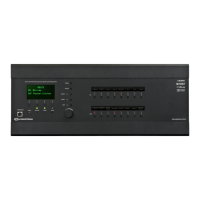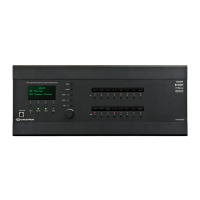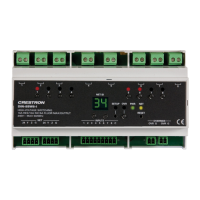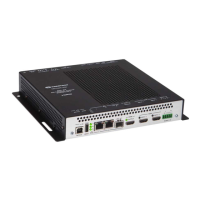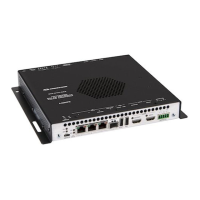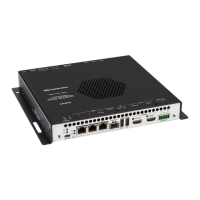16 • DM NVX System Design Guide – DOC. 7977F
• In many DM NVX installations, configure specific control surfaces (such as
Crestron touch screens) and additional switch options (such as local HDMI
switches) at endpoints.
Network Design
DM NVX systems require a designed and provisioned Ethernet network to function
correctly. Be sure to gather requirements and documentation, coordinate with IT staff,
and complete network design prior to site work.
Minimum Network Requirements
Minimum network requirements must be met for a successful installation. Minimum
requirements consist of the following:
• Network switch:
- 1-Gigabit port for every connected DM NVX endpoint
- Nonblocking backplane
- Layer 3
- IGMPv2 implementation
• Network switch settings:
- IGMPv2 snooping enabled
- IGMPv2 querier enabled
- Fast-leave enabled (also known as immediate-leave)
• Inter-switch uplinks (if required):
- The uplinks must have sufficient bandwidth for all encoders and decoders
connected to the network switch. Allocate 1 Gigabit per encoder or decoder
connected to the switch.
- Uplinks must be configured properly to support multicast traffic.
Network Design Overview
DM NVX networks must be designed to isolate traffic on network segments specifically
architected for DM NVX devices. This can be accomplished by using separate
infrastructure, Virtual Local Area Networks (VLANs), or Multi-Protocol Label Switching
(MPLS). DM NVX network segments carry DM NVX multicast streams, DM NVX control,
and ancillary traffic.
The location of other Crestron network devices relative to network infrastructure
must be determined. A decision must be made as to whether the devices are to coexist
on the same network segment as the DM NVX segment or on another segment that
has traversal capabilities to the DM NVX segment but is not multicast enabled.
Networked AV devices other than DM NVX devices can be placed on the DM NVX
network segment if their bandwidth requirements are relative to the DM NVX endpoint
bandwidth requirements.

